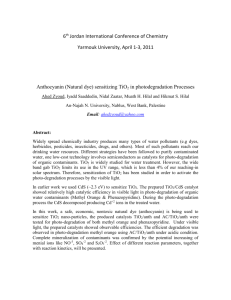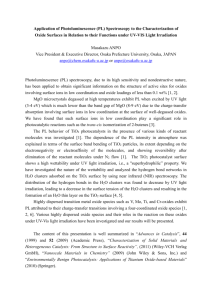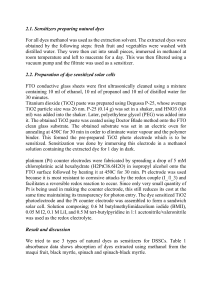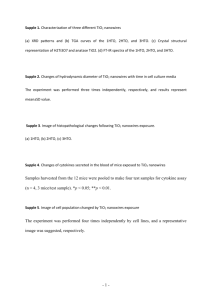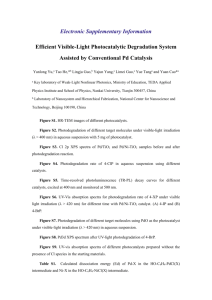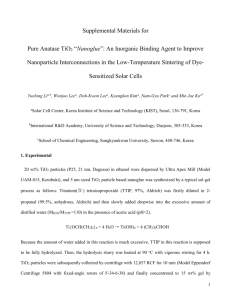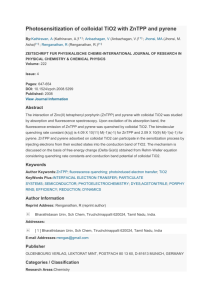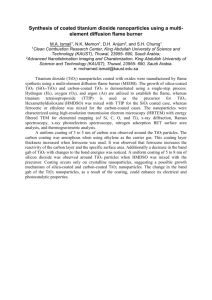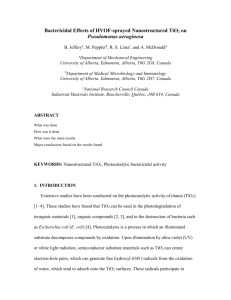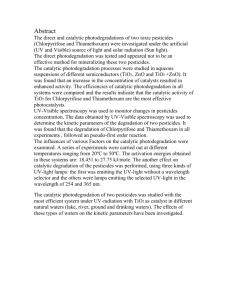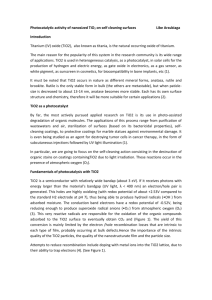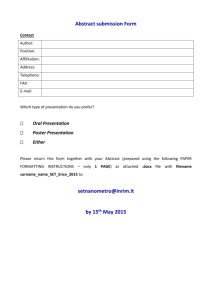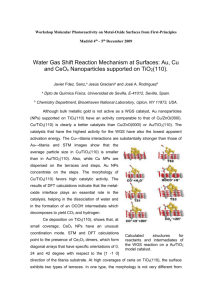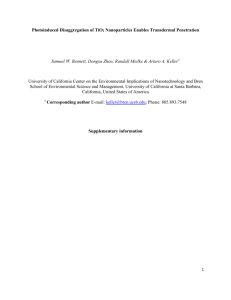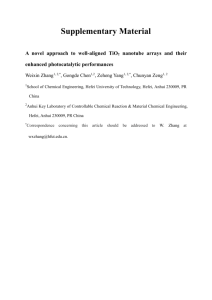Title: Dye sensitized Pt-coated TiO2-catalyzed photo
advertisement
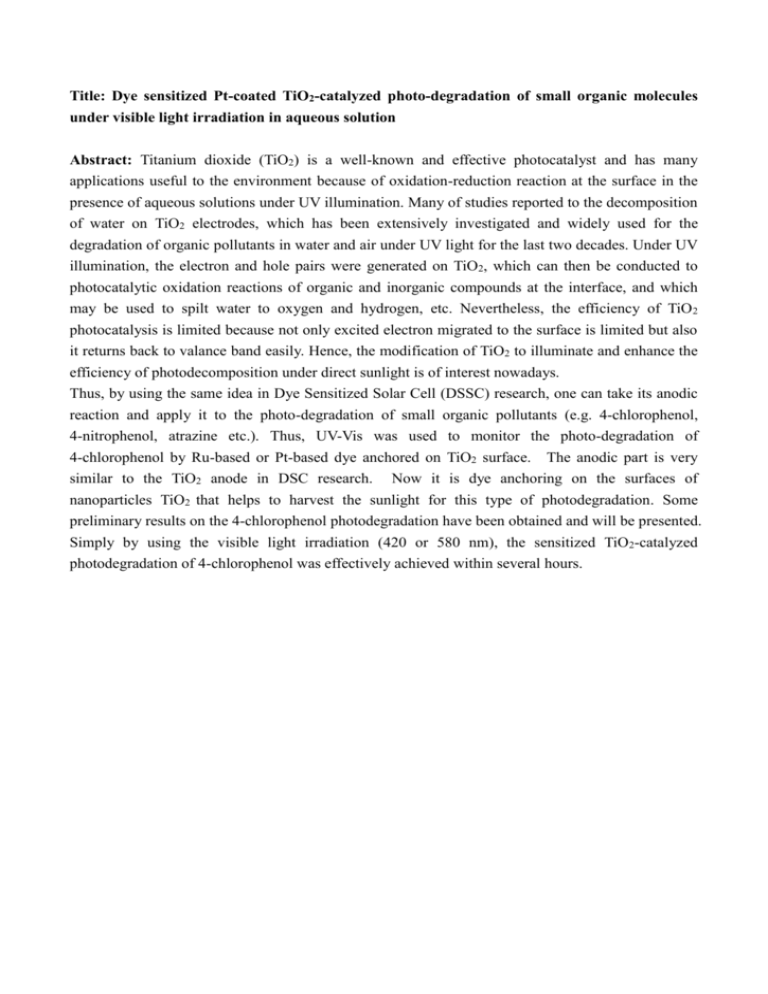
Title: Dye sensitized Pt-coated TiO2-catalyzed photo-degradation of small organic molecules under visible light irradiation in aqueous solution Abstract: Titanium dioxide (TiO2) is a well-known and effective photocatalyst and has many applications useful to the environment because of oxidation-reduction reaction at the surface in the presence of aqueous solutions under UV illumination. Many of studies reported to the decomposition of water on TiO2 electrodes, which has been extensively investigated and widely used for the degradation of organic pollutants in water and air under UV light for the last two decades. Under UV illumination, the electron and hole pairs were generated on TiO2, which can then be conducted to photocatalytic oxidation reactions of organic and inorganic compounds at the interface, and which may be used to spilt water to oxygen and hydrogen, etc. Nevertheless, the efficiency of TiO 2 photocatalysis is limited because not only excited electron migrated to the surface is limited but also it returns back to valance band easily. Hence, the modification of TiO2 to illuminate and enhance the efficiency of photodecomposition under direct sunlight is of interest nowadays. Thus, by using the same idea in Dye Sensitized Solar Cell (DSSC) research, one can take its anodic reaction and apply it to the photo-degradation of small organic pollutants (e.g. 4-chlorophenol, 4-nitrophenol, atrazine etc.). Thus, UV-Vis was used to monitor the photo-degradation of 4-chlorophenol by Ru-based or Pt-based dye anchored on TiO2 surface. The anodic part is very similar to the TiO2 anode in DSC research. Now it is dye anchoring on the surfaces of nanoparticles TiO2 that helps to harvest the sunlight for this type of photodegradation. Some preliminary results on the 4-chlorophenol photodegradation have been obtained and will be presented. Simply by using the visible light irradiation (420 or 580 nm), the sensitized TiO 2-catalyzed photodegradation of 4-chlorophenol was effectively achieved within several hours.


